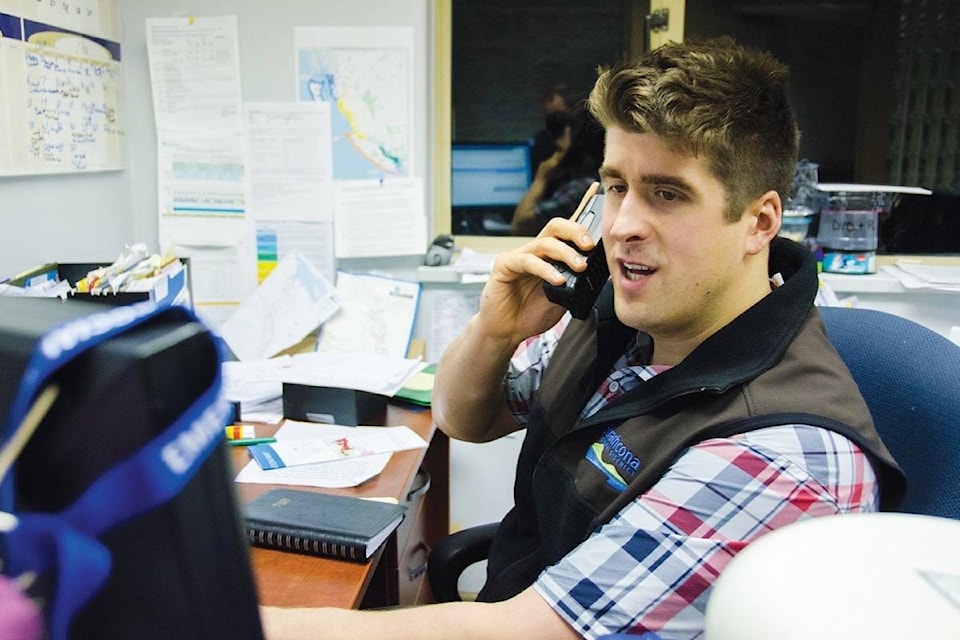Strathcona Regional District protective services coordinator Shaun Koopman wants to know where you live.
Okay, that sounds odd. To clarify, he only wants to know what area of the region you live in. He wants to know some other things, too. Specifically, how prepared you are in the event of an emergency.
That’s right. He wants you to fill out a survey.
“There are so many different types of household preparedness activities,” Koopman says. “Sure, I have an idea of how many addresses are clearly visible on houses, because I drive around and notice that type of thing, but I can’t know how many people have basic first aid. I don’t know how many people have assessed the Firesmart rating of their house. I don’t know how many people have ‘Grab-n-Go’ bag. The more of that stuff I know, the better I can do my job. If everybody has stockpiled enough food and water, I can back off that message and maybe focus on the fact that only five per cent of people have rated the Firesmart rating of their home, for example, if that’s what the responses show.”
But it’s not just about information collection, Koopman says. It’s also another way for him to inform people about what they need to do to be prepared. While you’re filling out the survey, he says, you also learn a bit more about how prepared you are, just by how many “no” answers you supply.
“I’ve already gotten about 500 responses so far,” Koopman says. “I know a lot of people don’t really like doing surveys, but I wouldn’t say people hate this one, because it’s very enlightening.”
Maybe you’ve never heard of Firesmart, for example, so you don’t know that you should use it to assess the potential fire danger to your home.
“The more of these steps they take, the better our community is going to come through a disaster,” Koopman says. “The more people who secure their china cabinets to the wall, well, that’s fewer injuries that hospital staff are going to have to deal with. I tell people, ‘don’t just think about it from your perspective, think about it as respect for our first responders. You’re putting them in a less dangerous and stressful situation by taking care of yourself.’”
Ideally, Koopman says, people will see how many “no” boxes they check on the survey and take measures to turn them into “yes.”
“The biggest thing I tried to do with this survey is keep it cost-low,” Koopman says. “I didn’t ask if you’ve had a seismic engineer assess your home. I didn’t ask if you have fire insurance. These are important things, sure, but most of the things on the survey are either free or very low cost. I wanted people to be able to be able to turn one ‘no’ into a ‘yes’ every week without that barrier of expense.”
The survey is available here. It will be open until the end of April so that Koopman has time to process the data and release it during Emergency Preparedness Week, May 7-13.
Physical copies of the survey are also available at the SRD offices, 301-990 Cedar Street.
